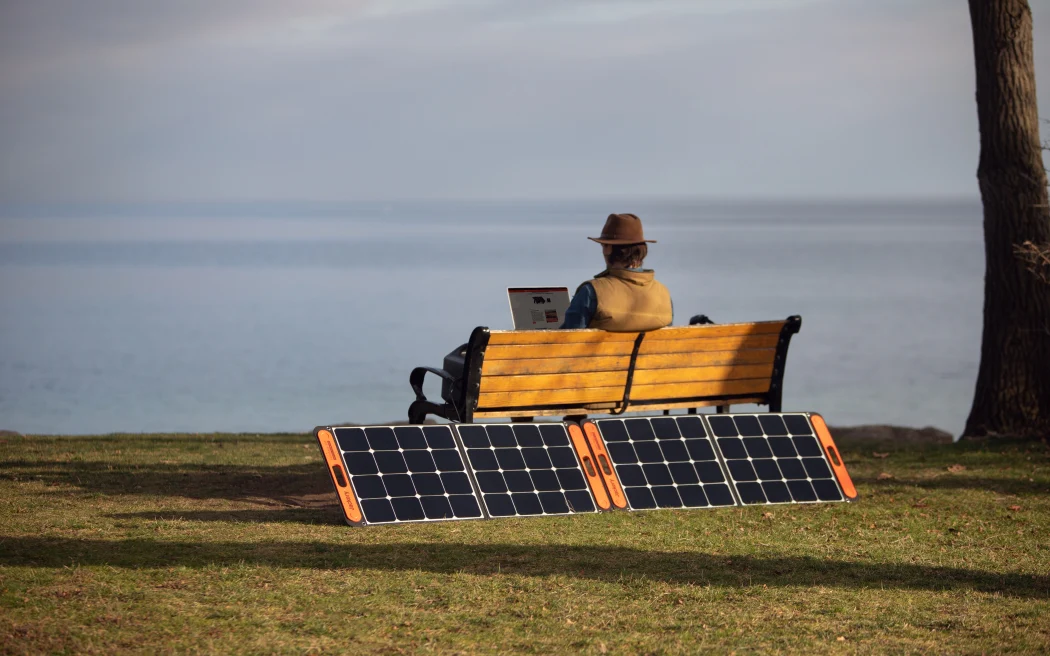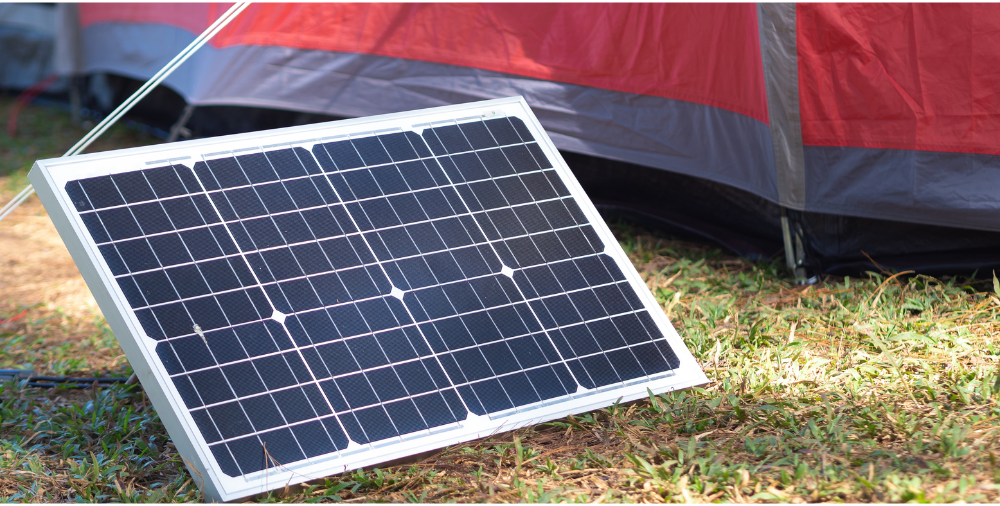5 Benefits of Using a 100W Solar Module
A 100W solar module offers efficient power supply, environmental energy saving, cost savings, ease of installation, and increased independence, making it ideal for small homes, remote areas, and off-grid locations. It helps users reduce energy costs and enhance energy autonomy.
Efficient Power Supply
The 100W solar module is one of the few relatively high-power and high-efficiency modules in the market. It is very suitable for households or devices with relatively low demands for electricity but requiring a stable power supply. A 100W solar panel installed on a standard residential roof would produce about 0.5 to 0.6 kWh per hour in good sunlight conditions, which would provide enough electricity to cover basic daily needs such as charging phones, powering LED lights, fans, and other small power devices.
Most of the 100W solar modules available on the market are made with a photovoltaic conversion efficiency ranging between 15% and 20%. Some high-performance products even achieve 22%-23%, hence allowing the converting of more sunlight into electricity. Some brands utilize monocrystalline silicon technology that allows it to collect more sunlight energy in the same area, maximizing the solar power generation potential.
For outdoor enthusiasts, the 100W solar module generally has an integrated smart controller that can monitor, in real-time, the state of the battery and solar power generation, and perform automatic adjustment of output current. This will not only avoid the possibility of overcharging but also prolong the service life of the battery. A 100W solar module, in an ideal sunny environment, will charge a 12V battery in 5 to 6 hours, which is enough to power a small refrigerator or electric tools.
The prices for a 100W solar module range from $100 to $150, but the installation depends on the situation. Installation fees are normally between $50 and $100. This can serve as a rather cheap power source for small-budget projects. In remote places or areas where access to the grid is not available, the utilization of 100W solar modules not only saves long-term electricity expenses but can also increase energy self-sufficiency, reducing the reliance on external power supplies.
For more on choosing the right photovoltaic cell, check this guide on solar panels.
Environmental Energy Saving
The reason it is clean energy is that, during utilization, solar energy as a source does not emit carbon dioxide or other greenhouse gases. For each kilowatt-hour of used energy coming from solar systems, about 0.8 kg of carbon dioxide emissions are reduced. IEA claims that the global production and consumption of energy shares more than 60% in all global greenhouse gas emissions, although the wide utilization of solar energies will reduce that proportion.
In sunny areas, a 100W solar module can save an average of $100 to $200 in annual electricity costs for a household. For households in remote areas far from the grid, using solar power reduces dependence on traditional energy consumption. Moreover, depending on usage frequency and local sunlight conditions, the payback period for this energy-saving effect is usually 3 to 5 years, or even shorter.
It is well understood that with every 1% increase in efficiency, a lot of energy savings are perpetuated over a long period. The conversion efficiencies for high-efficiency mono silicon modules have reached about 22%, producing more electricity within the same installation area compared to the normal 15% modules, hence improving energy utilization.
According to the Solar Energy Industries Association, solar is currently one of the fastest-growing energy sources in the world. The capacity of solar has been increasing by 20% annually for the past decade, a trend that is forecasted to persist over the next years. In 2020, the total accumulated solar power capacity installed on Earth reached about 760GW, reaching approximately 1300GW by 2025.
According to the studies of the United Nations Environment Programme, the installation of 100GW of solar capacity annually in the world would result in the reduction of more than 300 million tons of carbon dioxide emissions annually, accounting for about 10% of all global emissions from the transportation sector.
For insights on how indirect sunlight impacts solar panel efficiency, check this article on performance.
Cost Savings
Statistics from the U.S. Energy Information Administration say that the bill for electricity yearly accounts for about 5-10 percent of a household's budget. Using the assumption above, let's assume it takes $100 per month; therefore, the annual consumption would be at $1200. In some instances, 100W solar modules allow saving up to 30-50 percent in terms of electricity cost with respect to the saving of a single household. By this, annual saving will range to approximately $360-600.
Studies by ISEA show that commercial buildings can save an average of 15% to 25% in terms of all-over operating costs when they adopt solar systems. Assuming a monthly electricity bill of US$ 2000 for small businesses, the annual electricity cost comes out to be US$ 24,000. After installing a solar system, theoretically, it will reduce electricity cost by 20% to 40%, and thereby decrease the annual cost by about US$ 4800 to US$ 9600.
According to the Global Solar Market Report, the price of solar panels has fallen by about 70% since 2010, and in the next five years, the price of solar products will continue to decline. The cost of buying a 100W solar module is from $100 to $150, and the installation cost is based on the specific situation but generally falls between $50 to $100.
A 100-watt solar module can, therefore, avoid the extremely high grid access costs in remote area sites without grid access. The World Bank estimates that the remote grid usually costs between US$20,000 and US$50,000 per kilometer, while using solar modules requires only about 20 to 30% of that cost from grid connection fees, allowing users to enjoy stable and low-cost power supplies in the same area.
For more details on factors affecting solar panel efficiency, visit this guide on solar panel performance.
Easy Installation
A report by Solar Power World illustrates that, with the main causes being simpler module designs and increased installation technologies, installation time has reduced by 30% over the past five years. Most of the 100W modules come with plug-and-play design interfaces where one only needs to plug the module into the controller and the battery pack to roll into work. Commonly, every 100W solar system usually takes about 2-4 hours to install, thus saving time and labor costs tremendously.
The Solar Energy Industries Association estimates that the typical residential installation cost of solar has fallen from $6/watt in 2010 to $2.50/watt today. The installation cost for a 100W module is generally in the range of $100 to $150, and it is often possible to save over half the cost by choosing DIY installation.
The 100W solar module is normally lightweight, weighing about 5 to 7 kgs per module, and thus installation does not require a lot of manpower or complicated tools. Even lightweight supports and mounting devices can complete the installation. The module dimensions are generally 0.6m x 0.8m, and thus, it is pretty easy to install on rooftops, balconies, or terraces with limited space.
A study from the World Bank reported that "grid connection in isolated areas could have an upfront range cost between $20,000 to $50,000 per connection", against a grid-independent solar module setup whose cost is estimated at just approximately 20 to 30% of grid connection. Besides, accessories needed for solar systems installation also do not bear a high price, like cables, supports, and controllers. This makes the overall investment of the system generally less than $500 to $800, hence very inexpensive and fast in comparison with grid connection and other conventional energy alternatives.
For more information on 100W solar module performance, check out this real-world usage guide.
Increased Independence
The International Energy Agency estimates that 700 million people in various parts of the world live without electricity, and this energy gap can be covered effectively by using solar modules. A resident with an installed 100W solar module will be self-sufficient in supply and have access to a stable power supply.
Excess electricity can be stored for use when needed by using a battery storage system in conjunction with these modules. The EIA says as many as 30% of solar users install small storage systems, which enable them to maintain power supply during nighttime or on cloudy days. For a 100W solar module system combined with a battery storage system, users can save about 20%-30% on electricity costs and no longer rely on the unstable power supply provided by electric companies.
Installation of a 100W solar module for small businesses or offices may reduce the operational cost of offices. According to a report, GreenTech Media says that businesses in small shops in the U.S. are able to save 10%-15% on their electricity bills with the help of solar systems.
According to EM-DAT, an organization monitoring disasters, power outages due to typhoons, earthquakes, and floods have increased globally in disaster areas with populations over 50 million. The restoration time for electricity usually lasts weeks or months in these cases. In these circumstances, the 100W solar module serves as an important tool for emergency power supply after disasters.
For more details on the mono PERC solar technology, check out this insightful article.

